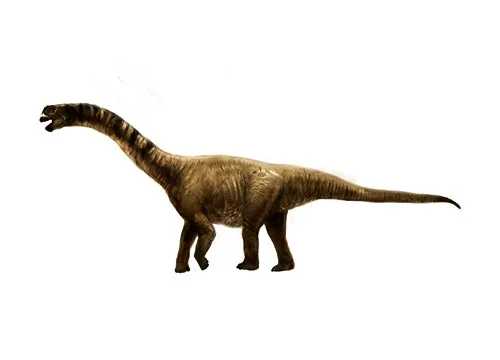Camarasaurus (Chambered lizard)

Cam-ah-rah-sore-us
Edward Drinker Cope - 1877
Herbivore
Estimated 15-23 meters long
Sauropod
C. supremus (type), C. grandis, C. lentus
USA, Wyoming, New Mexico, Colorado & Utah - Morrison Formation
Late Jurassic, 155-145 million years ago
Camarasaurus Facts
This dinosaur lived during the Late Jurassic period, about 155 to 145 million years ago, and was one of the most common large herbivores of its time.
The name “Camarasaurus” means “chambered lizard”, referring to the distinctive cavities in its vertebrae. These cavities, or pleurocoels, were once thought to be air sacs that helped to lighten the dinosaur’s massive body and improve its breathing. However, recent research suggests that these cavities may have actually been filled with fatty tissue, serving as a food reserve for the dinosaur during lean times.
Camarasaurus had a long neck and a short, stocky body, with a small head and a mouth full of small, peg-like teeth. It walked on all fours, with its front legs being much shorter than its hind legs, giving it a somewhat tripod-like appearance. The dinosaur was between 50 and 70 feet in length and weighed around 20-30 tons, making it one of the largest dinosaurs of its time.
Despite its size and importance as a herbivore in its ecosystem, not much is known about the behavior and ecology of Camarasaurus. Fossil evidence suggests that it may have lived in herds and used its large size and long neck to reach vegetation that was out of reach for other dinosaurs. Some specimens have been found with gastroliths, or stomach stones, in their stomachs, which may have helped the dinosaurs grind up tough plant matter.
In conclusion, Camarasaurus was a remarkable dinosaur that lived during the Late Jurassic period and played an important role in its ecosystem as a large herbivore. Despite its widespread popularity and recognition, there is still much to learn about this fascinating dinosaur, and I am excited to see what new discoveries may be made in the future.



